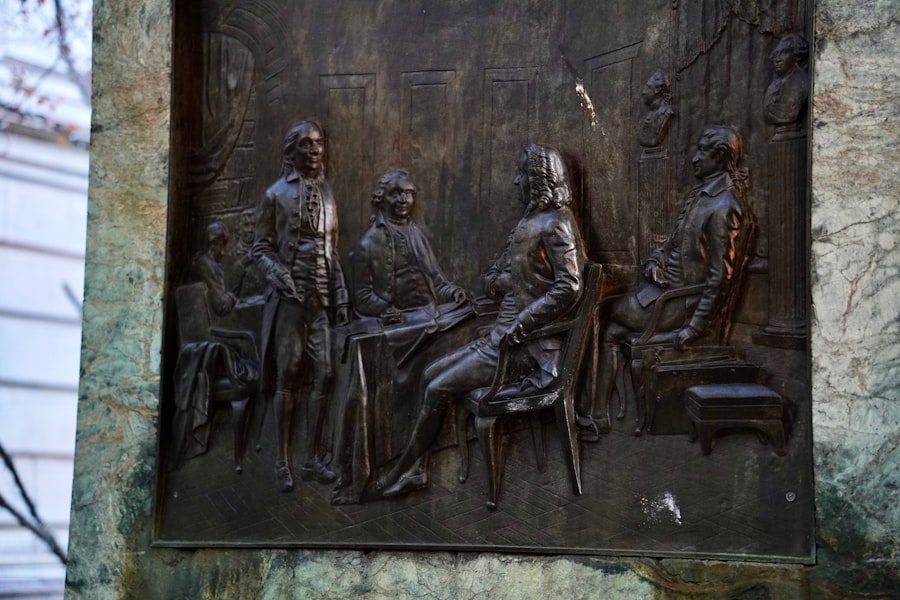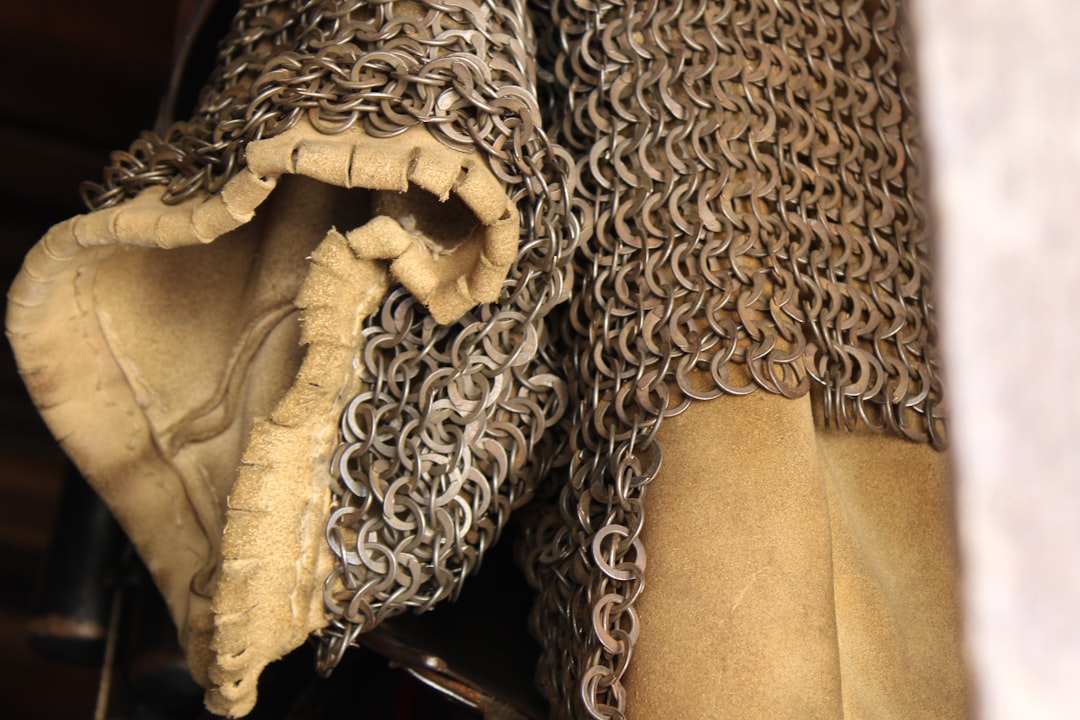The Founding Fathers of the United States are often celebrated for their roles in establishing a nation built on principles of liberty and justice. However, a critical examination of their lives reveals a complex and troubling relationship with slavery. Many of these prominent figures, including George Washington, Thomas Jefferson, and James Madison, were slave owners who benefited from the institution of slavery while simultaneously advocating for freedom and equality.
This contradiction raises profound questions about the moral foundations of the nation they helped to create. The ideals enshrined in the Declaration of Independence, proclaiming that “all men are created equal,” starkly contrasted with the reality of enslaved individuals who were denied basic human rights. The legacy of the Founding Fathers is further complicated by their attempts to navigate the contentious issue of slavery within the framework of a new government.
While some, like Jefferson, expressed moral reservations about slavery, they often prioritized political unity and economic interests over ethical considerations. The compromises made during the Constitutional Convention, such as the Three-Fifths Compromise, exemplified how deeply entrenched slavery was in American society. These decisions not only shaped the political landscape of the time but also laid the groundwork for future conflicts that would ultimately culminate in the Civil War.
The Founding Fathers’ relationship with slavery serves as a reminder that the pursuit of freedom for some was built upon the oppression of others.
Key Takeaways
The Trail of Tears and Native American Genocide
The Trail of Tears stands as a harrowing chapter in American history, symbolizing the forced removal and suffering of Native American tribes in the 1830s. Under the guise of progress and expansion, the U.S. government enacted policies that led to the displacement of thousands of Indigenous people from their ancestral lands.
The Indian Removal Act of 1830, signed by President Andrew Jackson, authorized this brutal campaign, which aimed to clear land for white settlers in the southeastern United States. The Cherokee, Creek, Seminole, Chickasaw, and Choctaw nations were among those who faced devastating consequences as they were forcibly relocated to designated “Indian Territory” west of the Mississippi River. The journey along the Trail of Tears was marked by unimaginable hardship and suffering.
Thousands of Native Americans endured harsh conditions, including exposure to disease, starvation, and violence during their forced march. It is estimated that thousands perished along the way, their lives cut short by the brutality of a policy driven by greed and a desire for land. This tragic episode not only highlights the systemic racism and disregard for Indigenous lives prevalent in American society but also serves as a stark reminder of the ongoing struggles faced by Native communities today.
The legacy of the Trail of Tears continues to resonate, prompting discussions about reparations, recognition, and reconciliation.
The Tuskegee Syphilis Experiment

The Tuskegee Syphilis Experiment is one of the most egregious examples of medical ethics violations in American history. Conducted between 1932 and 1972 by the U.S. Public Health Service, this study aimed to observe the natural progression of untreated syphilis in African American men in Alabama.
The participants, many of whom were poor and uneducated, were misled into believing they were receiving free medical care for “bad blood.” In reality, they were denied treatment even after penicillin became widely available in the 1940s. This betrayal of trust not only caused immense suffering but also highlighted the deep-seated racism within the medical establishment. The ramifications of the Tuskegee Syphilis Experiment extended far beyond its conclusion in 1972.
The study’s unethical practices eroded trust between African American communities and healthcare providers, leading to lasting skepticism about medical institutions. The fallout prompted significant changes in research ethics, including stricter regulations regarding informed consent and oversight for clinical trials. However, the scars left by this experiment remain palpable, as it serves as a chilling reminder of how systemic racism can infiltrate even the most trusted institutions.
The legacy of Tuskegee continues to influence discussions about health disparities and equity in healthcare today.
Japanese Internment Camps during World War II
| Aspect | Information |
|---|---|
| Number of Camps | There were 10 main internment camps and numerous smaller camps. |
| Population | Approximately 120,000 Japanese Americans were interned during the war. |
| Duration | The internment lasted from 1942 to 1945. |
| Conditions | Living conditions in the camps were often overcrowded and lacking in privacy. |
| Legal Status | The internment was authorized by Executive Order 9066, which was later recognized as a grave injustice. |
During World War II, fear and prejudice led to one of the darkest moments in American history: the internment of Japanese Americans. Following the attack on Pearl Harbor in 1941, widespread suspicion and paranoia regarding Japanese Americans erupted into a campaign of mass incarceration. In 1942, President Franklin D. Roosevelt signed Executive Order 9066, which authorized the forced relocation of approximately 120,000 Japanese Americans—many of whom were U.S. citizens—from their homes on the West Coast to internment camps scattered across the country. Life in these camps was characterized by harsh conditions and loss of freedom. Families were uprooted from their communities, often losing their homes and businesses in the process. Living in cramped barracks surrounded by barbed wire and armed guards, internees faced not only physical confinement but also emotional trauma stemming from their unjust treatment. The internment experience left deep scars on Japanese American communities that persist to this day. In 1988, the U.S. government formally acknowledged this injustice through reparations and an official apology; however, many argue that true reconciliation requires ongoing efforts to educate future generations about this dark chapter in American history.
The CIA’s MK-Ultra Mind Control Program
The CIA’s MK-Ultra program represents a chilling intersection of government secrecy and unethical experimentation during the Cold War era. Initiated in the 1950s, MK-Ultra sought to explore mind control techniques using drugs, hypnosis, and other methods to manipulate human behavior. Under this covert program, unwitting subjects—including mental health patients, prisoners, and even everyday citizens—were subjected to experiments without their consent or knowledge.
The use of substances like LSD was particularly notorious, as researchers sought to determine their potential for interrogation and psychological manipulation. The revelations surrounding MK-Ultra have raised profound ethical questions about government accountability and individual rights. As details emerged in the 1970s through congressional investigations, it became clear that many participants suffered long-term psychological effects from their involvement in these experiments.
The program’s legacy serves as a cautionary tale about the potential for abuse when power is unchecked and highlights the importance of ethical standards in research and experimentation. Today, discussions about informed consent and human rights continue to be informed by the lessons learned from MK-Ultra.
The Watergate Scandal

The Watergate scandal remains one of the most significant political crises in American history, fundamentally altering public trust in government institutions. Beginning with a break-in at the Democratic National Committee headquarters at the Watergate office complex in 1972, what initially appeared to be a minor crime quickly escalated into a full-blown political scandal involving high-ranking officials within President Richard Nixon’s administration. As investigations unfolded, it became evident that there was a concerted effort to cover up not only the break-in but also various abuses of power.
The fallout from Watergate ultimately led to Nixon’s resignation in 1974—the first time a sitting president had ever done so under threat of impeachment. The scandal exposed deep-seated corruption within government ranks and raised critical questions about accountability and transparency in leadership. In its wake, reforms were implemented to enhance oversight and restore public confidence in democratic institutions.
However, Watergate also left a lasting legacy of cynicism toward political leaders that continues to influence public perception today.
The Iran-Contra Affair
The Iran-Contra Affair stands as a complex episode that underscores the intricate interplay between foreign policy and domestic politics during Ronald Reagan’s presidency. In an effort to support Nicaraguan Contra rebels fighting against a Sandinista government perceived as hostile to U.S. interests, members of Reagan’s administration secretly facilitated arms sales to Iran—despite an embargo against selling weapons to that country.
The proceeds from these sales were then funneled to support Contra operations in Nicaragua. When details of this covert operation came to light in 1986, it sparked a political firestorm that raised serious questions about executive power and accountability. Investigations revealed that senior officials had circumvented Congress’s authority by engaging in clandestine activities without proper oversight or approval.
The scandal not only tarnished Reagan’s presidency but also ignited debates about constitutional limits on presidential power and the role of Congress in foreign affairs. Ultimately, while some individuals faced legal consequences for their actions, many key figures emerged relatively unscathed—a reality that continues to fuel discussions about accountability within government.
The Tuskegee Airmen and Racism in the Military
The Tuskegee Airmen represent a remarkable story of courage and resilience against systemic racism within the U.S. military during World War
The contributions of the Tuskegee Airmen challenged prevailing stereotypes about race and ability while paving the way for future generations of African Americans in military service. Their success not only demonstrated that they could excel as pilots but also highlighted broader issues related to racial segregation within armed forces—a practice that persisted until President Harry Truman’s desegregation order in 1948. The legacy of the Tuskegee Airmen continues to inspire discussions about diversity and inclusion within military institutions today.
The Salem Witch Trials
The Salem Witch Trials serve as a cautionary tale about mass hysteria and scapegoating fueled by fear and superstition. In 1692, a series of hearings and prosecutions took place in colonial Massachusetts following accusations against several individuals—primarily women—of witchcraft.
The trials reflect how societal pressures can distort justice when fear overrides reasoned judgment. Many innocent lives were lost during this dark period due to unfounded accusations fueled by personal vendettas or community rivalries. In retrospect, the Salem Witch Trials serve as an enduring reminder of how easily fear can lead to injustice—a lesson that resonates throughout history whenever societies grapple with issues related to scapegoating or persecution based on unfounded beliefs.
The Red Scare and McCarthyism
The Red Scare that swept through America during the late 1940s and early 1950s marked a period characterized by intense fear of communism infiltrating American society. Spearheaded by Senator Joseph McCarthy’s aggressive campaign against alleged communists within government institutions and other sectors, this era saw widespread paranoia leading to blacklisting, investigations, and public shaming based on often flimsy evidence or mere association with leftist ideologies.
As investigations unfolded without due process or fair trials, many innocent people found themselves caught up in a web of suspicion that undermined civil liberties across America. Ultimately, McCarthyism serves as a stark reminder about how fear can erode democratic values when unchecked by reasoned discourse or respect for individual rights.
The My Lai Massacre in Vietnam
The My Lai Massacre stands as one of the most horrific incidents during the Vietnam War—a stark illustration of how war can dehumanize individuals and lead to unspeakable atrocities. On March 16, 1968, U.S. Army soldiers killed between 347 and 504 unarmed South Vietnamese civilians—primarily women, children, and elderly individuals—in what was initially described as a search-and-destroy mission against suspected Viet Cong insurgents.
The massacre was not an isolated event but rather part of broader patterns of violence that characterized U.S. military operations during Vietnam—a conflict marked by escalating tensions and moral ambiguity surrounding military engagement abroad. When news broke about My Lai two years later through investigative journalism efforts led by reporters like Seymour Hersh, it sparked outrage across America and raised profound ethical questions regarding military conduct during wartime.
In its aftermath, My Lai prompted calls for accountability within military ranks while highlighting issues related to war crimes and civilian protection during armed conflict—a conversation that continues today as societies grapple with similar dilemmas across various global contexts. The legacy left behind by My Lai serves as both a somber reminder about humanity’s capacity for violence under duress while also emphasizing the importance of ethical considerations even amidst chaos on battlefields worldwide.
In exploring the depths of American history’s darkest secrets, one might find it intriguing to delve into related articles that shed light on lesser-known aspects of the nation’s past. A fascinating read can be found on the Hey Did You Know This website, which offers a plethora of insights into historical events and figures that have shaped the United States. For those interested in uncovering more hidden truths and intriguing stories, I recommend checking out this article that provides a unique perspective on American history.
FAQs
What are some of the darkest secrets in American history?
Some of the darkest secrets in American history include the treatment of Native Americans, the internment of Japanese Americans during World War II, and the government’s involvement in the Tuskegee syphilis experiment.
How have these secrets impacted American society?
These secrets have had a lasting impact on American society, contributing to ongoing issues of racial inequality, discrimination, and mistrust of the government.
Why is it important to acknowledge and learn about these secrets?
It is important to acknowledge and learn about these secrets in order to understand the full scope of American history and its impact on different communities. By acknowledging these dark chapters, society can work towards healing and reconciliation.
What steps can be taken to address the impact of these secrets?
Steps that can be taken to address the impact of these secrets include education, reparations, and policies aimed at promoting equality and justice for affected communities. Additionally, acknowledging and learning from these secrets can help prevent similar injustices from occurring in the future.
